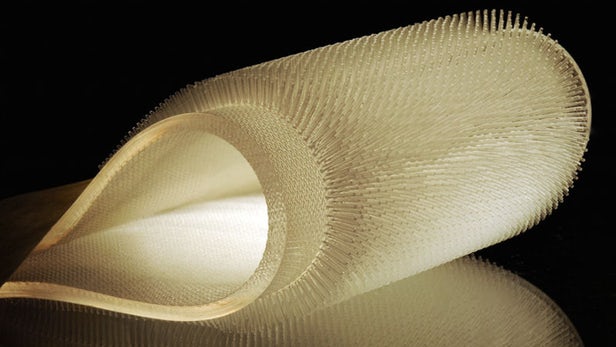
Breaking News
 Christmas Truce of 1914, World War I - For Sharing, For Peace
Christmas Truce of 1914, World War I - For Sharing, For Peace
 The Roots of Collectivist Thinking
The Roots of Collectivist Thinking
 What Would Happen if a Major Bank Collapsed Tomorrow?
What Would Happen if a Major Bank Collapsed Tomorrow?
Top Tech News
 Travel gadget promises to dry and iron your clothes – totally hands-free
Travel gadget promises to dry and iron your clothes – totally hands-free
 Perfect Aircrete, Kitchen Ingredients.
Perfect Aircrete, Kitchen Ingredients.
 Futuristic pixel-raising display lets you feel what's onscreen
Futuristic pixel-raising display lets you feel what's onscreen
 Cutting-Edge Facility Generates Pure Water and Hydrogen Fuel from Seawater for Mere Pennies
Cutting-Edge Facility Generates Pure Water and Hydrogen Fuel from Seawater for Mere Pennies
 This tiny dev board is packed with features for ambitious makers
This tiny dev board is packed with features for ambitious makers
 Scientists Discover Gel to Regrow Tooth Enamel
Scientists Discover Gel to Regrow Tooth Enamel
 Vitamin C and Dandelion Root Killing Cancer Cells -- as Former CDC Director Calls for COVID-19...
Vitamin C and Dandelion Root Killing Cancer Cells -- as Former CDC Director Calls for COVID-19...
 Galactic Brain: US firm plans space-based data centers, power grid to challenge China
Galactic Brain: US firm plans space-based data centers, power grid to challenge China
 A microbial cleanup for glyphosate just earned a patent. Here's why that matters
A microbial cleanup for glyphosate just earned a patent. Here's why that matters
 Japan Breaks Internet Speed Record with 5 Million Times Faster Data Transfer
Japan Breaks Internet Speed Record with 5 Million Times Faster Data Transfer
For warmer surfers, leave it to beaver-inspired wetsuits

Even though they don't have a thick layer of blubber, animals such as beavers and sea otters are still able to stay warm when diving in frigid waters. How do they do it? Well, they trap an insulating layer of air between the hairs of their fur. MIT scientists have taken that concept and run with it (or swum with it), creating a bioinspired material that could be used to make lighter, warmer wetsuits.
Last year, lead scientist Prof. Anette (Peko) Hosoi and a group of students visited the Taiwan headquarters of sporting goods manufacturer Sheico Group. The company was interested in creating wetsuits that were better able to let surfers quickly shed water when getting up on their boards, yet still remain warm when submerged.
The researchers already knew about small semiaquatic mammals' ability to trap air in their fur, and set about looking for ways to replicate that quality using manmade materials. In order to do so, they created a number of "fur-like surfaces" molded from a soft rubber called PDMS (polydimethylsiloxane).
These samples, which featured differing densities and lengths of individual rubber hairs, were then mounted on a vertical motorized stage (fur-side facing out) and dunked in silicone oil at varying speeds. By observing close-up video of the dunkings, the scientists were able to determine which samples were best at trapping air, and at what dive speeds.
Based on those observations, they developed a mathematical model that could be applied to the manufacture of wetsuits.
"People have known that these animals use their fur to trap air," says Hosoi. "But, given a piece of fur, they couldn't have answered the question: Is this going to trap air or not? We have now quantified the design space and can say, 'If you have this kind of hair density and length and are diving at these speeds, these designs will trap air, and these will not'."

 The State's Last Stand
The State's Last Stand


